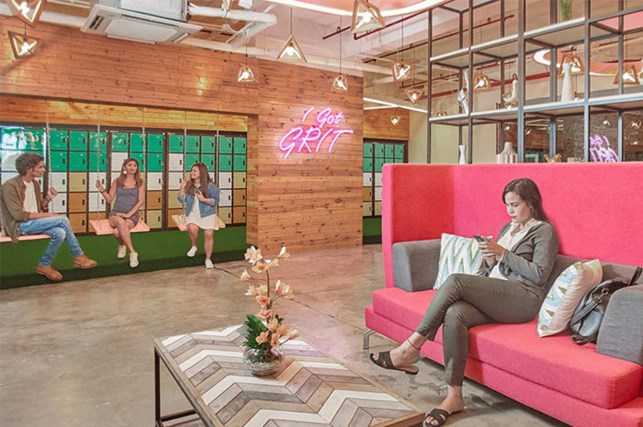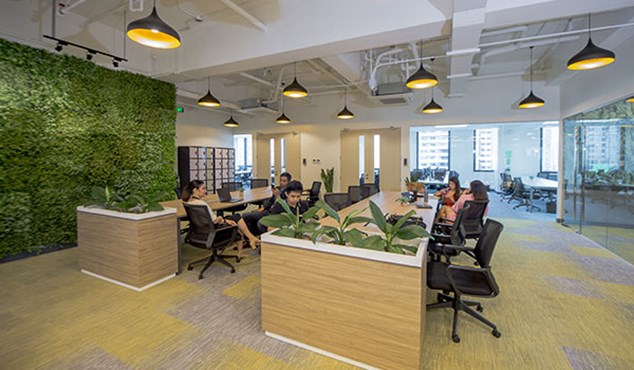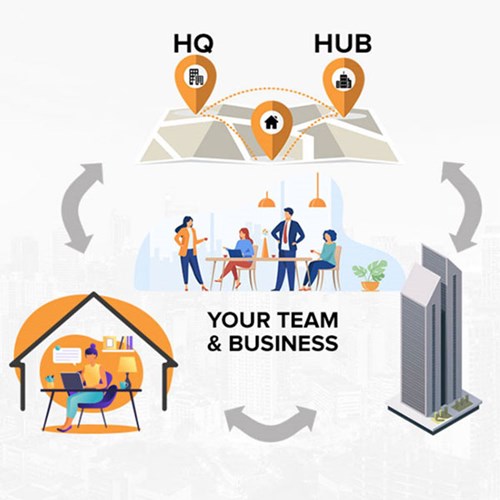The Future Trends of the Coworking Space Industry
12/2/2020 | By Marella Gimenez
As the coworking industry has expanded and the community it fosters continues to grow, it has undeniably experienced rapid industry growth within the last few years. Flexible workspace providers’ global leasing activity rose by 200 percent from 2017 to 2018, cementing serviced offices as its own separate sector. But as the COVID-19 pandemic hit early on this year, all forms of office spaces were suddenly left empty and the workforce pushed to work from their homes.
Players in the industry had inevitably suffered losses, closures, and expense cuts trying to keep their doors open to the public during the first half of the lockdown. However, with economic activity slowly resuming in major cities and business hubs, firms are now looking into ways they can decongest their own office. Flexible workspaces and coworking spaces offer the perfect solution in helping these businesses achieve a flexible work arrangement suited to the needs of their employees.
Coworking has always been more than just a temporary space that workers could rent, but instead emphasized the sense of community and collaboration it built within the spaces. As the needs of the workforce are ever-changing, especially in today’s climate, coworkers will now want workspaces that minimizes their risk of infection and advocates for their health and safety. All this while still helping them escape the work-from-home burnout most remote workers have been experiencing and renew their drive for productivity. The coworking business is now starting to make a slow comeback and have closely followed the market trends that can drive agile workers back into the workplace. Here are the trends and things to expect from coworking spaces in the next year:
Unique Spaces & Design
One of the main things that drove the popularity of coworking spaces is the unconventional design and layout of the place. Not strictly laid out as a traditional office, the wide-open communal spaces had the professionalism of an office with the casual atmosphere of a home or coffee shop. A detailed research about coworking trends by Coworking Mag states that design over the years have grown to not only respond to the diverse needs of their community but to predict what they’ll need in the future with innovative design.

Standing desks, sitting desks, couches, bean bags, nap rooms can all be seen in one flexible workspace. It was built to accommodate any type of worker who comes in and build a diverse community. Although the big, open communal spaces in coworking have become a staple in the industry, small private work corners, enclosed cubicles, and smaller workstations in other nooks of the workspace have also slowly become a design trend. Staying true to its nature of providing a setup for every kind of work style, pro-working spaces are seen to be evolving past quick gimmicks and passing fads.
Multiple Locations

Towards the latter part of the year into the pandemic, companies are now slowly transitioning parts of their staff back into a work environment that is preferably nearer to their homes. People searching for flexible workspace are normally more attracted to providers who have more than one location they can choose from. One of the initial attractions and benefits coworkers enjoyed from coworking spaces was their reduced commute and travel time. As firms and businesses are on the road to recovery, adapting to other flexible work arrangements through utilizing other types of workspaces seems to be ideal.
The convenience this also poses to office workers can make them feel more inclined to get back into the office as long as the coworking space follows standard health & safety protocols. Multiple branches not only decongest other workplaces but also minimizes the risk of infection while workers can work in a safe and conducive environment.
Go Green
As health and wellness have become more of a focus in recent years, greenspace design has proven to be a design trend that’s here to stay due to its long-term benefits. Biophilic colors such as greens, yellows, and browns have been known to have a soothing effect on people and works especially well in office environments because of workers spending most of their time in closed spaces.

A study conducted by the University of Twente further finds that being surrounded by greenery fuels productivity and improves concentration by 20%. With the lessened stress, this encourages engagement with one’s work and colleagues, opening a collaborative environment in the workspace. However, incorporating indoor plants and shrubbery is not the only way to achieve greenspace design in the workplace and can be done through other natural elements such as artwork, natural light, wood and timber, and even water views.
Perks and Add-ons
Serviced offices and flexible workspaces have started to provide more than just a space to rent to their members and have added other services they can offer to their package as well. This is similar in concept to the way corporate companies provide other benefits for their employees other than compensation. Some services that were in demand for this ongoing trend last year was child care, employee training/onboarding, payroll and human resource services.
Additional services in 2019 were more centered around helping and assisting one’s business but given this year’s situation, businesses are now looking for services that mainly focus on health and wellness. Onsite clinics, check-ups, events about safety, health, and food are predicted to be the things workers will now additionally look for in a coworking space. As well as other activities that still promote the community spirit of the workspace and help coworkers feel less isolated when working from home, such as online events like virtual happy hour, game nights, and mental health webinars.
Customized Coworking Packages
The ongoing pandemic has shown us that almost every aspect of business can be done virtually online. With businesses now transitioning to a hybrid setup where employees can report to a workspace on some days and work from home during the other days, this also calls for a newer type of coworking membership. As soon as the coworking industry saw office workers slowly coming into the workplace again and businesses implementing flexible work arrangements, some operators have started selling virtual memberships as well. Understanding that firms won’t be back to normal for quite a while, coworking spaces have also applied hybrid types of coworking packages to accommodate this.

It is an apt solution that gives coworkers the same unique work experience even on the days they work from home. During the times they won’t be reporting on site, they can join virtual events, communicate with other onsite members during breaks, and participate in calls in the same meeting rooms. This gives them both a virtual and physical coworking space experience that works in tandem with their flexible work arrangement.
There are many other budding trends, however, only some have had the flexibility to adapt to the times and assist in business continuity for both the client and the flexible workspace provider. As coworking will have a renewed prominence in 2021 due to firms seeking other flexible alternatives, next year is predicted to hold promising developments for the industry.




